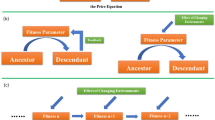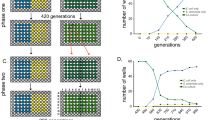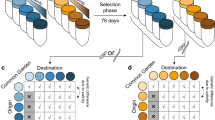Abstract
The nature of competition and biodiversity are open basic questions since Darwin. To investigate mechanisms of interspecific competition and their contribution in biodiversity as closely as possible we offer a white-box modelling method based on physically interpreted ecological axioms. These models are implemented as deterministic individual-based cellular automata and able to give a direct physico-mechanistic insight into studied phenomena. Competition of two trophically identical but fitness different species, competing for one limiting resource in one stable uniform habitat (which is closed for immigration, emigration, predation, herbivory and parasitism) has been investigated in conditions, which are the most unfavourable for their coexistence. The species are per capita identical in fecundity, ontogeny, regeneration features of microhabitats, and in habitat requirements. We have modelled following 8 mechanistic mechanisms of interspecific competition:1. A case of the competitive exclusion when competing species differ only in fitness.2. Coexistence based on periodic dominance changeovers as a consequence of environmental changes. Competing species differ only in fitness.3. A strong violation of the competitive exclusion principle due to the lowered fecundity of both competitors. Competing species differ only in fitness.4. Coexistence based on the competition–colonisation trade-off when greater fitness is compensated by r-strategy.5. A competition–colonisation trade-off based on differences in ontogeny.6. Competitive exclusion when recessive species drives out the dominant one having four times greater fecundity than the dominant one in stable environment (the greater fitness cannot compensate r-strategy).7. An inverted competitive exclusion when recessive species drives out the dominant one by strategy of anticipatory deprivation of resources for competitor’s offsprings propagation. Recessive species drives out the dominant one in stable environment and both competing species have identical fecundity (tripod neighbourhood). Paradoxically, but the greater fitness cannot save the dominant species when the all other parameters of the species are equal.8. Both competing species die because the regeneration of a limiting environmental resource takes too much time and they cannot propagate.The revealed mechanisms of competition can be useful not only in conservation biology, but also in economics and politics. Additionally, we speculate that the simplest way to maintain biodiversity is a controlled reduction of human fertility as the decrease in biodiversity occurs largely due to humankind overloading of biosphere resources.
Similar content being viewed by others
Article PDF
Author information
Authors and Affiliations
Corresponding author
Rights and permissions
About this article
Cite this article
Kalmykov, L., Kalmykov, V. Mechanistic mechanisms of competition and biodiversity . Nat Prec (2012). https://doi.org/10.1038/npre.2012.7105.1
Received:
Accepted:
Published:
DOI: https://doi.org/10.1038/npre.2012.7105.1



